|
I received this lens while evaluating Canon lenses. This is one of Canon’s “holy triangle” – which also includes the 24-70/ 2.8 and the 70-200/ 2.8 (with or without IS). Considering the fact that this is an FF lens and not an APS lens, it’s not that heavy, so here are a few technical details: the lens includes 14 elements in 10 groups (a slightly “thin” structure for this type of lens upon first sight). The secret lies in the three aspheric elements – similar to Nikon’s 17-55.
Canon states that the elements are different from each other; that is why they can take the place of a large number of single elements. This solved the riddle. The lens weighs 600gr, which makes it a light weight considering the heavy artillery that it carries. Canon does not mention that the lens includes ED elements, and not in vain.
We will see later on that their absence is felt. The minimal focusing distance is 28cm, and it provides an enlarging coefficient of 0.22 in its 35mm state, which is not bad.
Its smallest aperture is f:22, just like the 24-105 and Nikon’s 17-55, and with a short lens like this one, there is no point in constructing a smaller aperture because the diffraction effect will damage the quality of the picture. The lens has USM – speedy focusing with an ultrasonic motor installed within the lens (similar to Nikon’s AFS) and it is as fast as lightning. One touch and you’re in focus. You have to know the camera well so you can make sure that the camera will focus on the right location; I blew it a few times because I did not know the system. I had some reservations regarding the number of leaves the aperture had – 7 straight leaves – which does not guarantee a good bokeh, but we shall see this later on. The lens has a good zoom range, and it covers the wide area range for almost all purposes. 16mm on FF is really very wide, but not on a Canon APS camera with a crop factor of 1.6 – here the lens looks as if it is a 25mm in the wide angle zoom position, and that is not in the ultra-wide range.
All of Canon’s and Nikon’s APS cameras suffer from this problem, so there is a need for wider lenses to get the ultra-wide coverage. Canon has recently presented a 10-22mm EFS lens, which is compatible to APS cameras (I've tested it too), and it provides a 16mm FOV on a Canon APS camera. The aspherical elements do a wonderful job, and in none of the zoom states is there any indication of barrel distortion or pin-cushion distortion. Also the “tear drop” (coma) distortion cannot be found, and that is an impressive achievement for such a wide lens. The colors this lens produces are neutral, perhaps with a slight tendency towards cool shades, but this might just be to my eyes. The most impressive thing is the uncompromising sharpness of this lens, which reaches its maximum already in aperture 4, and at infinity, the situation returns to the close distance state – sharp at 2.8 and also at 4. Closing the aperture to 4 improves the general contrast and the microcontrast, which is really superb. The lens has an annoying flare, more than the 24-105 lens. Without a sun shade, the lens catches flare even when the sun is not in the frame, and using a sun shade is compulsory when the sun is out. The flare problem in wide lenses is a well-known problem, and with this lens as in the 24-105 and the Nikon 17-55 lens one must be beware of the sun.
This is, of course, in complete contrast to Nikon’s 12-24 lens and Canon’s 10-22 lens, which seem to be almost flare free. Logically it seems that it should be the opposite, but facts are facts. Another surprising fact is that the 17-35 lens of both companies, and also Nikon’s 18-35 do not tend to flare easily. That’s a riddle. The lens’s immunity against CA is borderline, this is probably due to the absence of the ED/UD elements or if they are present they have little effect.
When shooting dark elements over a bright background, the CA floats easily at the frame corners, but on the other hand, even with conditions of bright back-light, it maintains a good microcontrast.
The pictures were taken in 20D in Raw format, and were converted to Jpeg in full resolution. One must take into account the fact that the 20D has a crop factor of 1.6 and it only "sees" the middle part of the lens. One has to repeat the series with 5D or with 1DSMK2/3 to check the behavior in the margins. The following are the tests results. And first of all - the lens:
Sharpness test – close distance, 16mm – aperture 2.8:
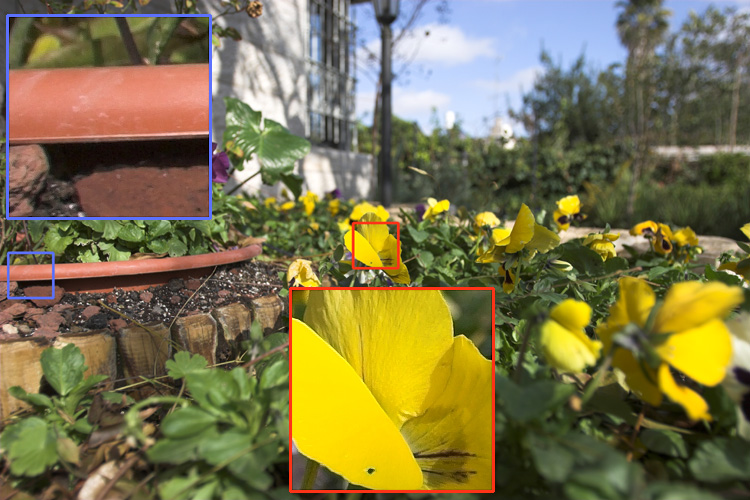 | | Model: Canon EOS 20D Exposure Time: 1/1600sec F Number: 2.8 Focal Length: 16mm Exposure Program: Aperture priority Exposure Bias Value: 0 ISO Speed Ratings: 100 Metering Mode: Partial White Balance: Auto white balance Flash: Flash did not fire, compulsory flash mode Date Taken: 2006:01:21 13:07:21 Color Space: 65535 |
The sharpness is excellent in the center and good at the edges. Same distance, same focal length – aperture 4:  | | Model: Canon EOS 20D Exposure Time: 1/1000sec F Number: 4 Focal Length: 16mm Exposure Program: Aperture priority Exposure Bias Value: 0 ISO Speed Ratings: 100 Metering Mode: Partial White Balance: Auto white balance Flash: Flash did not fire, compulsory flash mode Date Taken: 2006:01:21 13:07:14 Color Space: 65535 |
The sharpness is excellent at both the middle and the edges of the frame. The lens has uncompromising at close range shooting. The nest test was done at medium range. When fully open (aperture 2.8):  | | Model: Canon EOS 20D Exposure Time: 1/1600sec F Number: 2.8 Focal Length: 16mm Exposure Program: Aperture priority Exposure Bias Value: 0 ISO Speed Ratings: 100 Metering Mode: Partial White Balance: Auto white balance Flash: Flash did not fire, compulsory flash mode Date Taken: 2006:01:21 13:07:48 Color Space: 65535 |
And after closing to aperture 4:
 | | Model: Canon EOS 20D Exposure Time: 1/800sec F Number: 4 Focal Length: 16mm Exposure Program: Aperture priority Exposure Bias Value: 0 ISO Speed Ratings: 100 Metering Mode: Partial White Balance: Auto white balance Flash: Flash did not fire, compulsory flash mode Date Taken: 2006:01:21 13:07:52 Color Space: 65535 |
When the aperture is closed to 4 at medium range (at around 3 or 4 meters), the picture is very sharp, which is not true for aperture 2.8 – there it’s only reasonable. When I set the range to infinity (about 50 meters) I got the same result as for the close range test – good sharpness with aperture 2.8 and aperture 4. The next test, which indicates the quality of the lens, is testing it against a strong back light, and searching for details in the photographed area. It passed this test successfully, as you can see in the next photo, which was taken at the 35mm state with aperture 4:
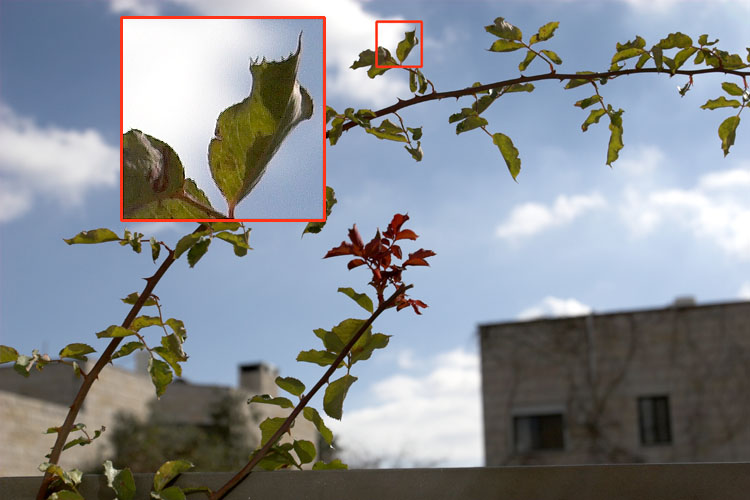 | | Model: Canon EOS 20D Exposure Time: 1/3200sec F Number: 4 Focal Length: 35mm Exposure Program: Aperture priority Exposure Bias Value: 0 ISO Speed Ratings: 100 Metering Mode: Partial White Balance: Auto white balance Flash: Flash did not fire, compulsory flash mode Date Taken: 2006:01:21 13:09:37 Color Space: 65535 |
The microcontrast it extracts from the photo, even at harsh lighting conditions, is very good, and it can handle changing light conditions and get details wherever they can be identified. Even the smallest details of the lemon are clearly visible, even though the back-light is strong:
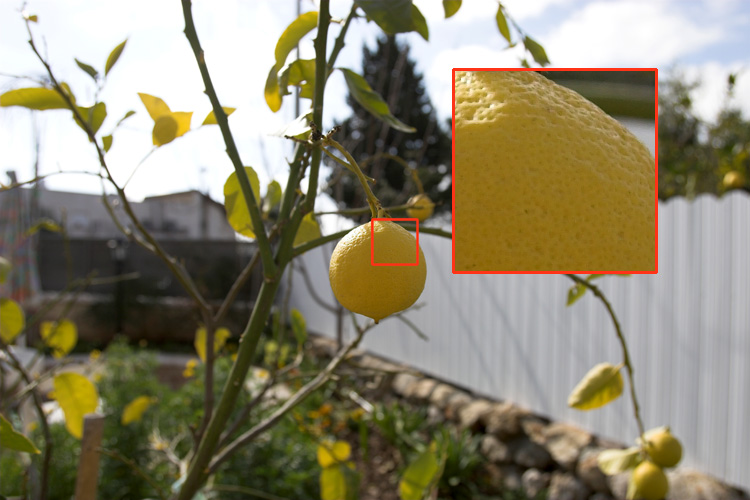 | | Model: Canon EOS 20D Exposure Time: 1/800sec F Number: 4 Focal Length: 16mm Exposure Program: Aperture priority Exposure Bias Value: 0 ISO Speed Ratings: 100 Metering Mode: Partial White Balance: Auto white balance Flash: Flash did not fire, compulsory flash mode Date Taken: 2006:01:21 13:11:06 Color Space: 65535 |
The second example is my “model” tree. All its twists and turns, and its bark are shown clearly and sharply:
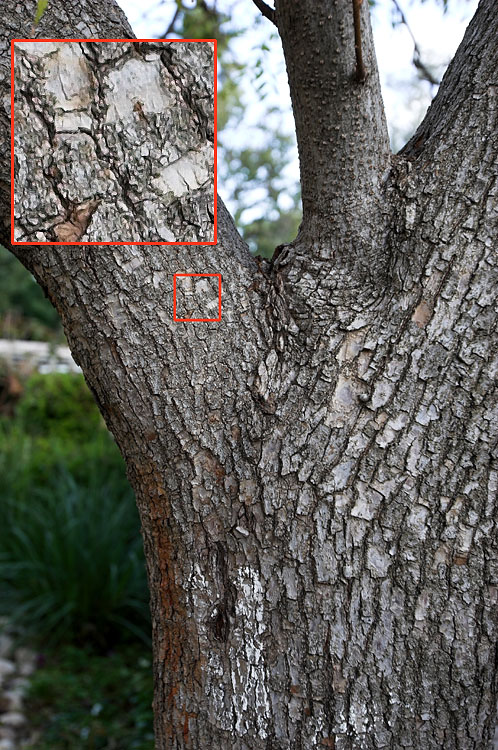 | | Model: Canon EOS 20D Exposure Time: 1/125sec F Number: 4 Focal Length: 35mm Exposure Program: Aperture priority Exposure Bias Value: 0 ISO Speed Ratings: 100 Metering Mode: Partial White Balance: Auto white balance Flash: Flash did not fire, compulsory flash mode Date Taken: 2006:01:21 13:08:02 Color Space: 65535 |
Its bokeh isn’t wonderful, as you can see in the out-of-focus areas, especially on the left side. In the middle the white circles shouldn’t be appearing in this way:
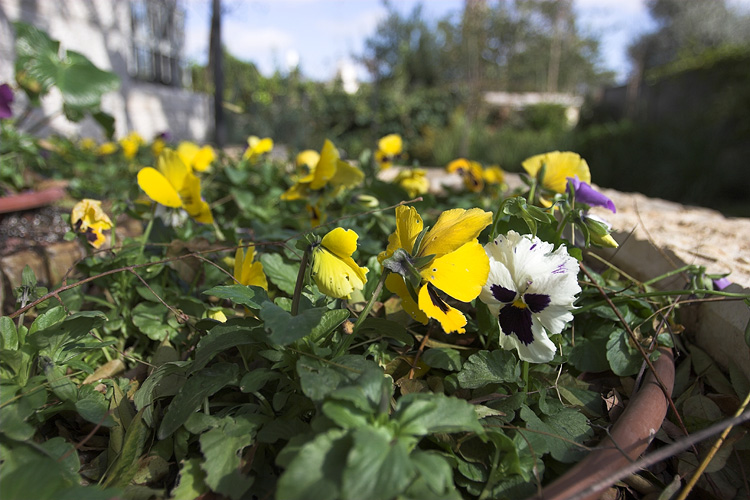 | | Model: Canon EOS 20D Exposure Time: 1/1000sec F Number: 2.8 Focal Length: 16mm Exposure Program: Aperture priority Exposure Bias Value: 0 ISO Speed Ratings: 100 Metering Mode: Partial White Balance: Auto white balance Flash: Flash did not fire, compulsory flash mode Date Taken: 2006:01:21 13:07:23 Color Space: 65535 |
I cannot understand why Canon did not make an effort to place more than 7 straight aperture leaves. If they took the trouble to invest in 3 aspheric elements, why couldn’t they do more than that? Of course, this lens is not designated for portrait photography, but it does enable short-range photography, and it would be nice if the bokeh looked better. Only Canon can answer this riddle. The CA (color aberrations) test was just sufficient. The reason is probably the lack of UD elements in the lens, and if they exist (canon does not indicate so) they are not really effective as the next picture shows:
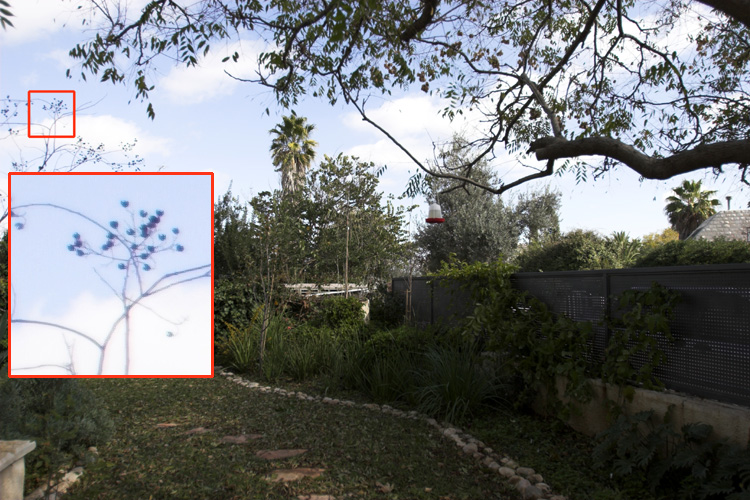 | | Model: Canon EOS 20D Exposure Time: 1/800sec F Number: 2.8 Focal Length: 16mm Exposure Program: Aperture priority Exposure Bias Value: 0 ISO Speed Ratings: 100 Metering Mode: Partial White Balance: Auto white balance Flash: Flash did not fire, compulsory flash mode Date Taken: 2006:01:21 13:07:27 Color Space: 65535 |
Closing of the aperture improves the situation and in aperture 5.6, the CA almost disappears. It sort of failed the flare test, and showed an unsightly flare – and did it even when the sun was not in the frame:
 | | Model: Canon EOS 20D Exposure Time: 1/1250sec F Number: 4 Focal Length: 16mm Exposure Program: Aperture priority Exposure Bias Value: 0 ISO Speed Ratings: 100 Metering Mode: Partial White Balance: Auto white balance Flash: Flash did not fire, compulsory flash mode Date Taken: 2006:01:21 13:06:35 Color Space: 65535 |
Summary: I encountered a lens that is not as heavy as a tank, which has rocket speed focusing, with excellent sharpness, contrast and detailing, and is free of space distortions. It also produces good quality colors. The bokeh can be handled when there are no small shiny elements in the background. It can handle details well against a back light, and if taking into account its flare problem - of which you have to be cautious in direct sun (always attach a sun shade on a clear day) - and when shooting in a closed environment - it will deliver the goods. I must express my reservation and say that I have not checked it in a full frame (and it is designated to work in full-frame, and not in EFS), that is why I cannot say what the implications would be in the frame edges.
I am not worried about its sharpness and the detailing will certainly not be harmed. I worry about its tendency to produce flare when it “sees” a wider angle and what will happen to the CA at the edges of the frame. The bottom line is – if you have the means – this lens is recommended for wide photography. |





